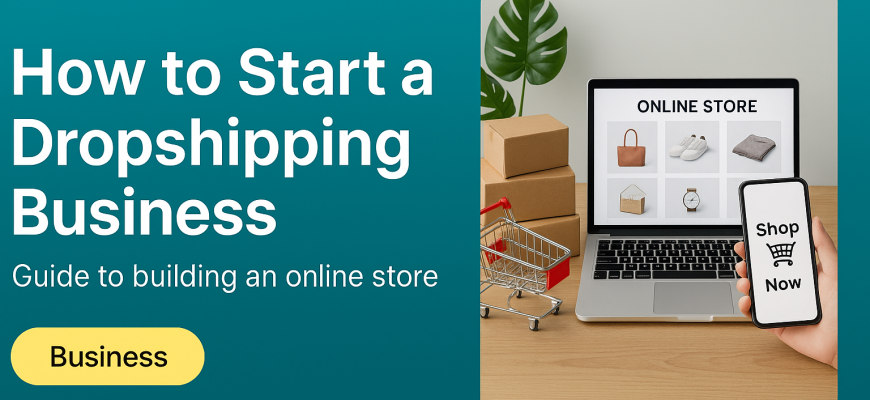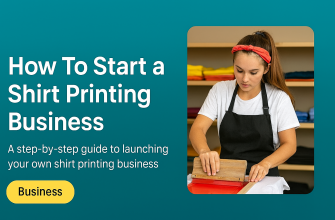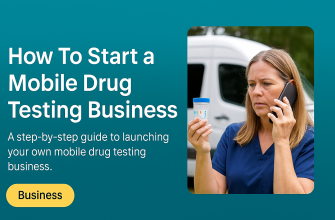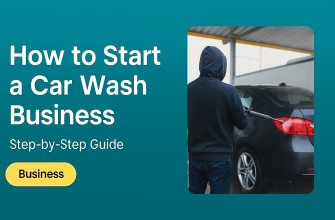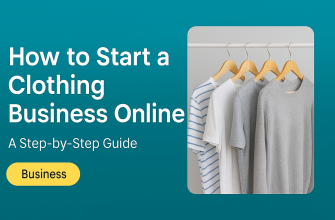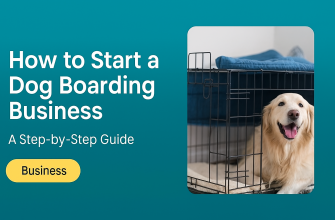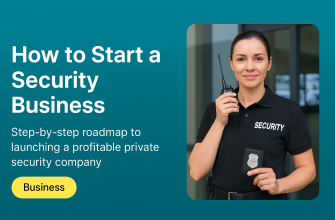Have you been dreaming about launching an online business, but feel unsure where to begin? You’re not alone. Many aspiring women entrepreneurs have great ideas and tons of passion, yet doubt and uncertainty often hold them back. The good news is that today more women are becoming business owners than ever – in fact, one in ten women launched a new business in 2023 (nearly catching up to men at one in eight). That means right now is the perfect time to join this wave of women entrepreneurs and turn your dream into reality.
In this post, I want to encourage and guide you through one of the most beginner-friendly ways to start an online business: dropshipping. As a coach who has helped many women build businesses, I know how important it is to have a clear plan and a confidence boost. So, let’s dive into what dropshipping is, why it’s a great first business model, and step-by-step instructions to get you started. By the end, you’ll see that you absolutely can do this – and you’ll have a roadmap to take your first bold step today.
- What is Dropshipping (and Why It’s Great for Beginners)
- Step-by-Step: How to Launch Your Dropshipping Business
- Step 1: Identify Your Niche and Products
- Step 2: Choose a Platform for Your Online Store
- Step 3: Find Reliable Suppliers and Dropshipping Tools
- Step 4: Set Up Your Online Store and Import Products
- Step 5: Design Your Brand and Website Aesthetic
- Step 6: Launch Your Store and Start Marketing Your Business
- Overcoming Common Challenges for Women Entrepreneurs
- Ready to Take Your First Step?
What is Dropshipping (and Why It’s Great for Beginners)
Dropshipping is a type of online business where you can sell products without having to stock any inventory yourself. In simple terms, you list items for sale on your website, and when someone buys from you, your supplier ships the product directly to your customer. You act as the storefront and marketing engine, while a third-party supplier takes care of storing the goods and shipping orders. This means you don’t have to buy bulk products upfront, store boxes in your garage, or deal with packing and shipping – the supplier handles that for you.
Why is dropshipping a great entry point for first-time entrepreneurs, especially busy women? For starters, it has a low barrier to entry. You don’t need a huge investment to begin. Since you only purchase a product after a customer has ordered it, your startup costs stay low – you’re not spending money on inventory that might not sell. This dramatically lowers the financial risk compared to a traditional retail business. In fact, you can run a dropshipping store with just a laptop and an internet connection, making it accessible if you’re starting from home or as a side hustle.
Dropshipping is also flexible. You can work on your own schedule, build your business from anywhere, and learn as you go without committing to a physical storefront or full-time hours right away. It’s an ideal model for women who may be juggling other responsibilities – whether it’s a day job, studies, or family. You can start small, test which products sell, and scale up gradually. Plus, if you’re not sure what to sell, dropshipping lets you experiment with different products and niches easily, since you’re not locked into large pre-purchased stock.
Finally, dropshipping teaches you valuable entrepreneurial skills with minimal risk. You’ll learn how to create an online store, market products, and serve customers – all of which build your confidence for future business growth. Yes, like any business, dropshipping requires effort and perseverance (it’s not a get-rich-quick scheme), but it’s a fantastic learning-by-doing playground. If you’re willing to put in the work, this model can open the door to earning income online and set the stage for bigger ventures down the road.
Step-by-Step: How to Launch Your Dropshipping Business
Ready to get practical? Let’s break down how to start your dropshipping business into clear, manageable steps. We’ll go through everything from choosing what to sell to getting your website live. Take it one step at a time – by the end, you’ll have your very own online store up and running!
Step 1: Identify Your Niche and Products
Every successful business starts with a great idea. In dropshipping, this means choosing a niche – a focused category of products – that you want to sell. Rather than offering “everything for everyone,” it’s usually best to start with a niche you care about or understand, or one that has an audience you relate to. This focus will make it easier to select products, brand your store, and market to the right customers.
Start by brainstorming areas that interest you: for example, do you love beauty and skincare? Are you a fitness enthusiast? A home organization geek? Maybe you’re a mom who knows the baby product world. Listing your interests can be a helpful first step. Next, consider what problems you can solve or needs you can meet for people in that niche. If you’re passionate about your niche, you’ll have insight into what customers might want – and you’ll stay more motivated working on your business every day.
If you’re not sure where to begin, here are some popular, low-barrier niches that many women entrepreneurs find success with:
-
Beauty & Self-Care Products: Examples include makeup accessories, skincare tools (like facial rollers), nail art kits, organic soaps, or hair accessories. The beauty niche is huge and evergreen – people always love products that help them look and feel good.
-
Health & Wellness: Think yoga mats, fitness accessories, meditation cushions, aromatherapy diffusers, vitamins or supplement organizers. With wellness booming, you can tap into trends around self-improvement and healthy living.
-
Home Organization & Decor: Items like closet organizers, cute storage bins, planners and journals, kitchen gadgets, or decorative throw pillows. Many women (and men!) are looking for ways to make their home more functional and beautiful.
-
Mom & Baby Products: This could include diaper bags, baby carriers, toddler meal prep tools, nursing covers, or educational toys. Busy moms appreciate convenient products, and who knows better what a mom needs than a fellow mom or a woman with that insight?
-
Lifestyle Accessories: You can also consider things like affordable jewelry, handbags, phone accessories, or stationery – these can be great if styled well for a specific audience (e.g., eco-friendly jewelry or inspirational planner notebooks for women).
Do some research on the niche you’re leaning toward. Look at other online stores or marketplaces to see what’s selling and what’s trending. Tools like Google Trends can show you if a product category is on the rise. For instance, if you notice a lot of buzz around sustainable beauty products or minimalist home decor, that’s a clue there’s strong demand. Aim for a niche that has demand but isn’t overly saturated, if possible. If it is popular, think about how you can narrow it down or differentiate your store (for example, instead of “women’s clothing” – which is very broad – you might focus on “athletic wear for new moms” or “plus-size office fashion,” something more specific).
Most importantly, choose something that excites you. Your enthusiasm will show through in how you design your store and talk about your products. And remember, this isn’t a lifelong commitment – you can always adapt or expand your niche later. For now, pick an area to start with. Clarity beats indecision. Once you have a niche in mind and a few product ideas, you’re ready for the next step!
Step 2: Choose a Platform for Your Online Store
Now that you know what you want to sell, it’s time to decide where to sell and actually build your online store. The easiest way for a beginner to create an e-commerce website is to use a hosted e-commerce platform – basically, an all-in-one website builder that’s made for online stores. Two of the most popular (and beginner-friendly) platforms are Shopify and Wix.
Shopify is a leading e-commerce platform that powers millions of online stores. It’s often recommended for dropshipping because it’s extremely user-friendly and has a ton of built-in tools and apps. You don’t need to know any coding – Shopify provides intuitive templates and a drag-and-drop editor to design your site. You simply choose a design theme (there are free ones to start with), then you can customize the layout, colors, and images to fit your brand. Shopify handles all the technical stuff like web hosting, security, and backend infrastructure, so you can focus on your business. They also offer a free trial, so you can play around before committing to a paid plan.
Wix is another great option, especially if you want more design freedom. Wix started as a general website builder but now has robust e-commerce capabilities. It’s also a drag-and-drop system with lots of stylish templates (including ones specifically for online stores). Many people find Wix easy to use for setting up a small boutique. It’s a good choice if you value creative control over your site’s look and feel. Wix plans for online stores are affordable, and they too handle the tech side (hosting, etc.) for you.
Both Shopify and Wix allow you to create essential pages (like product listings, a homepage, checkout page, About Us, and Contact page) with simple clicks. They also support secure payment processing, so you can accept credit cards, PayPal, etc., once you’re ready to launch. In short, these platforms are designed for non-tech entrepreneurs, so don’t let the idea of “building a website” scare you. If you can edit a Word document, you can build a basic site on these platforms – it’s that straightforward. And if you ever get stuck, both have extensive help centers and communities, plus there are countless YouTube tutorials for every step.
How to pick one? It might come down to personal preference. Shopify is very popular for dropshipping and has more specialized e-commerce features (and apps) as you grow, while Wix is great for a visually stunning site and simplicity. Either way, sign up for an account with your chosen platform. During the setup, it will prompt you to choose your site name (don’t sweat this too much – use your niche or something meaningful to you; you can change it later). You’ll also pick a template/theme. Choose one that matches the vibe of your business (for example, something clean and modern for tech gadgets, or something chic for a beauty brand). Both Shopify and Wix will walk you through the basics with a setup wizard. By the end of this step, you should have the skeleton of your online store ready – exciting! – even if it’s not filled with products yet.
Step 3: Find Reliable Suppliers and Dropshipping Tools
With your platform set up, you need products to sell in your store. In dropshipping, finding the right suppliers (the companies or manufacturers who will provide the products and ship them to your customers) is crucial. You want suppliers that are reliable, offer quality products, and preferably fast shipping times. This might sound daunting, but thankfully there are dropshipping apps and tools that make this process much easier for beginners.
If you chose Shopify, one of the most well-known tools is DSers (which replaced the older Oberlo app on Shopify). DSers is an app that connects your store to AliExpress, a massive online marketplace based in China that has over 100 million products available for dropshipping. Using DSers, you can browse AliExpress products right from the app, see details and reviews, and with one click import products into your Shopify store. When someone orders from your site, DSers helps automate sending that order to the AliExpress supplier who then ships it out. This saves a ton of time – you don’t have to manually order each item or track each supplier yourself. DSers (and AliExpress) is great for a huge variety of inexpensive products and is free to start with.
If you’re on Wix or another platform (or even with Shopify), you have other options too. Spocket is a popular dropshipping app that connects you with suppliers, especially those in the US/EU. Spocket is known for having suppliers that can ship faster to Western customers (often 3-5 days within the US) for products like fashion, beauty, and home goods. Another tool is Modalyst (which integrates with Wix and Shopify) – it offers a mix of products including name brands and trendy items. There are also supplier directories like SaleHoo or Wholesale Central where you can find vetted wholesalers and dropship-friendly suppliers.
For each product niche, do a bit of searching: for example, if you want to sell organic skincare, you might find a supplier through Spocket that’s a small skincare brand in the US, or see a highly rated AliExpress seller who specializes in that. Compare factors like product cost, shipping times, and supplier ratings. It’s often worth ordering a sample of a couple of products yourself to check the quality and shipping speed before you offer them to customers – this way you know exactly what buyers will experience.
Tips for choosing products: Start with a small selection of maybe 5-10 products that fit your niche and that you think your target customers will love. It’s better to curate a focused collection than to overload your new store with dozens of items. Look at product photos (the better the photos, the easier it will be to make your site look good), read reviews from other buyers on AliExpress or elsewhere, and check the supplier’s track record (most apps show ratings or number of orders fulfilled). Aim for products that have a decent profit margin too – remember, your profit is the difference between what you charge the customer and what the supplier charges you. Many dropshippers target a markup of 2-3 times the wholesale price. For example, if a product costs you $10 from a supplier, you might sell it for $20–$30. This can vary, but ensure after any shipping costs or platform fees, you’re left with a worthwhile profit per sale.
Once you’ve identified some products and suppliers, use your dropshipping app (DSers, Spocket, etc.) to add those products to your store catalog. Typically, the app lets you import the product with its photos and a default description. In the next step, we’ll refine how those product listings look on your site.
Step 4: Set Up Your Online Store and Import Products
This is where your business starts coming to life! In this step, you’ll be adding your chosen products to your website, organizing your store, and setting up the necessary details so you can actually start selling.
By now, your dropshipping app should have imported your product info into your store’s backend. Go to your Shopify or Wix dashboard and find your product list. For each product, take some time to edit the title and description to fit your brand’s voice. Suppliers often have bland or poorly translated descriptions – you’ll want to rewrite them in a way that appeals to your audience. Highlight the benefits of the product and how it can help or delight your customer. For example, instead of a supplier’s title like “Baby Stroller Organizer Bag DX-9000,” you might title it “Universal Stroller Organizer – Keep All Your Baby Essentials Handy.” Write a friendly, clear description that you would find convincing as a shopper. This is your chance to stand out from other sellers who might be offering the same item.
Next, ensure the product photos look appealing. The nice thing is suppliers usually provide photos. Use high-resolution images (most apps import them for you). If there are many images, choose the best ones and decide on a consistent style (for instance, all with white background, or a mix of product-only and lifestyle shots). You want your site to look clean and professional. If you have the product in hand, you could even take your own photos or videos for a personal touch, but that’s optional when starting.
Now, organize your products into logical categories (collections) on your site. For example, under a “Wellness” store you might have collections like “Yoga Gear,” “Relaxation Tools,” etc. This will help shoppers browse easily. Both Shopify and Wix allow you to create collections and show them on your menu.
This is also a good time to set up the other pages your site needs: an About Us page (tell your story or mission briefly – as a woman entrepreneur, feel free to share that personal touch about why you started this business), a Contact page (even if it’s just a contact form or an email address where people can reach you), and Store Policies like Shipping and Returns. Often, your platform will have templates for refund policy, privacy policy, terms of service – you can use those and edit as needed. Clear policies build trust with customers.
Don’t forget to configure your payment and shipping settings. In Shopify, you’ll be prompted to connect a payment provider (Shopify Payments, which accepts credit cards, or alternatives like PayPal). It’s usually straightforward – just follow their steps to set up an account so you can receive money. For shipping, since you’re dropshipping, you might set simple rules like free shipping, or flat rate, or just pass on what the supplier charges. Many dropshippers build in shipping cost into the product price to offer “free shipping” as an incentive. Even if shipping isn’t super fast at first (common with dropshipping), set proper expectations on your site (e.g., “Estimated delivery: 2-3 weeks” if using AliExpress suppliers) so customers know what to expect.
By the end of Step 4, your store should have products with nice descriptions and images, a clear structure, and all the backend pieces (payments, policies) ready. Take a moment to preview your website as a customer would see it. Click around – does everything make sense? This is your creation – looking good! Now, let’s make it truly yours with some branding magic.
Step 5: Design Your Brand and Website Aesthetic
One of the most fun parts of starting a business is creating your brand identity. This is where you infuse you into the business and make your store memorable. Don’t worry – you don’t need to be a design expert to build a beautiful brand. There are simple tools to help, and I’ll walk you through it.
Start with your brand name and logo. By now, you likely have a store name (from when you set up the platform). If you’re not totally happy with it, you can still change it or create a brand out of it. A short, catchy name that relates to your niche works well. Once you have a name, create a logo. One of the best tools for beginners is Canva – a free graphic design website that’s incredibly easy to use. Canva has tons of templates for logos. You can pick one you like and then edit the colors, text, and icons. For example, if your store is “Calm Home Co.” selling home organization items, you might choose a simple clean logo template and add a little house icon. Keep your logo relatively simple; it should be legible and look good small (like on a mobile screen or as a website header).
Use Canva (or similar tools) to also design any other graphics you might need, like a banner image for your homepage or social media posts announcing your launch. Consistency is key: pick 2-3 colors that represent your brand and use them throughout your site (your theme settings will let you set these). Also choose 1-2 fonts for your text that are easy to read and align with your brand vibe (for instance, a playful script for a kids’ boutique, or a modern sans-serif for a tech gadget store).
When designing your website on Shopify or Wix, stick to a clean and uncluttered layout. White (or neutral) space is your friend – it makes your products pop. Ensure your navigation menu is simple. Add a nice banner on the homepage that showcases what you sell (e.g., an image of someone using one of your products, or a collage of your top items) along with a tagline or welcome message. For a women-owned business, you might include a note like “Welcome to [Store Name] – female-founded, on a mission to [benefit].” Authenticity resonates with customers.
One tip I give my clients: don’t let perfectionism stop you from launching. It’s easy to get caught up tweaking your logo endlessly or fretting that your website isn’t “perfect” yet. Aim for a professional and trustworthy appearance, but it doesn’t need to win design awards on day one. You can always improve visuals later; the important thing is to be proud of how it looks now and move forward. If in doubt, keep it simple. A simple, neat site with good product photos and a heartfelt About page will beat a complicated but confusing site any day.
Finally, consider creating social media accounts for your brand (if you haven’t already). Even if you’re not ready to market heavily, go ahead and secure your brand name on platforms like Instagram, Facebook, or Pinterest – whatever you think your target customers use most. You can add those social links to your site. Having a matching Instagram page with at least a coming-soon post or two can add credibility (people often check social media for a new brand). Plus, you’ll eventually use these channels to promote your products – which brings us to the exciting final step!
Step 6: Launch Your Store and Start Marketing Your Business
Take a deep breath – you’re almost there! With products in your store, a nice design, and everything set up, it’s time to launch your dropshipping business and start getting customers. This step is all about going live and spreading the word.
First, do a quick run-through to make sure your checkout process works. Many platforms let you do a test order (for example, Shopify has a test mode for payments). Ensure things like taxes or shipping fees are showing up as you expect. It’s better to catch any hiccups now. Once all looks good, if you had a password on your site (Shopify by default puts a password protect on until you launch), remove it or hit that “Publish” button on Wix. Congratulations – your site is live for the world to see!
Now, I know launching can feel scary. You might be thinking, “What if I fail? What if nobody buys? Maybe I should tweak a bit more…” That inner voice of doubt is normal. But remember, every entrepreneur starts somewhere, and no one gets it perfect from day one. It’s completely okay if your launch is small. The key is to start. As your coach friend, I assure you that you will learn so much more by actually running your store than by keeping it hidden until it’s “perfect.” So let’s get your first visitors and customers!
Begin with people you know. Share your new business with friends and family – send a personal message or make a post on your personal social media announcing your store. You might say, “I’m excited to announce I’ve just launched my online store [Name] specializing in [niche]! It’s been a dream of mine as a new entrepreneur. Check it out [website link] – thank you for your support!” Your friends and family can be your first cheerleaders; some may even make a purchase to support you or help spread the word.
Next, leverage social media marketing for a broader reach. Set up posts on your brand’s Instagram and Facebook showing off your products. Use relevant hashtags (e.g., #organizeyourhome for home goods, #yogamom for yoga gear, etc.) so people interested in those topics can find you. Don’t be shy to tell your story in captions – people love to support small businesses, especially women-owned businesses, when they connect with the story and person behind it. You might also join Facebook groups or online communities related to your niche (for example, a Facebook group for fitness moms if you’re selling fitness gear). Be an active, genuine participant – provide value or tips in the community, and when appropriate you can mention or link to your product if it truly helps someone’s question. Always follow group rules (some don’t allow self-promo), but building real connections often leads to people checking out your profile and store.
Another effective strategy, even on a tiny budget, is influencer marketing or affiliate marketing. Identify a few micro-influencers (maybe on Instagram or TikTok) whose audience aligns with your niche. For example, if you sell beauty accessories, find a beauty blogger or makeup enthusiast with a moderate following. You can reach out to them, introduce your brand, and offer to send a free product for them to try, or give them a special link where they earn a commission for any sales they drive. Even a small shout-out or review from an influencer can bring your first sales and social proof. Many influencers, especially women supporting women, are happy to help a new small business if the product fits their personal brand.
Content marketing is another powerful tool: consider starting a simple blog on your website where you write short articles related to your niche (e.g., “5 Tips to Declutter Your Kitchen” if you sell home organizers, or “How to Sneak in Self-Care During a Busy Day” if you sell wellness items). This can bring in organic traffic over time from Google searches and also gives you material to share on social media or Pinterest.
As you market, remember that marketing is an ongoing experiment. Try different tactics and see what resonates. Maybe you get lots of engagement on Instagram but not much on Twitter – that’s okay, focus where your audience hangs out. Perhaps an ad campaign ($5 a day on Facebook/Instagram ads to a targeted group) could boost traffic – just be sure to target wisely and watch your budget. You don’t have to do everything at once. Start with one or two channels that make sense for your audience and do them consistently.
Finally, when orders start coming (hooray!), make sure to provide great customer service. Even though you’re dropshipping and not handling the product physically, you are the face of the business to your customers. Respond to questions promptly, send a friendly email to thank customers for their purchase, and keep them informed if there are any shipping delays. Happy customers can turn into repeat customers and will refer others. Early on, every single customer interaction is gold – treat people well and you’ll build a positive reputation.
Quick Recap of the Steps: Choose your niche, set up your store on a platform (Shopify/Wix), find dropshipping suppliers and import a few products, make your site look inviting and on-brand, then launch and hustle on marketing. You’ve got the blueprint – the next move is yours.
Overcoming Common Challenges for Women Entrepreneurs
Launching a business is a big step, and as a woman entrepreneur you might face some unique challenges on this journey. It’s completely normal to have worries pop up. The important thing is not to let these stop you. Let’s talk about a few common challenges women encounter when starting businesses, and some strategies to overcome them:
-
Confidence and Self-Doubt: It’s very typical to question yourself – “Am I cut out for this?” “Do I know enough to run a business?” Research shows that women often experience a “confidence gap” compared to men in business settings. You might feel like an imposter at times, but remember: confidence is a skill, not a fixed trait. The more you take action, the more your confidence will grow. To fight self-doubt, start small and celebrate small wins. Did you set up your website today? That’s a win – give yourself credit for it! Surround yourself with positive affirmations; maybe put a note on your desk saying “You’ve got this” or an inspiring quote from a female founder you admire. Some women find power poses or journaling daily accomplishments helpful in boosting confidence. The key is to recognize that feeling unsure doesn’t mean you’re incapable. You are learning and improving every day. Whenever that little voice of doubt pipes up, replace it with this thought: “If others can do it, so can I. Why not me?” Because truly, there is no reason why not. You bring unique strengths to the table by virtue of your experiences and perspective.
-
Lack of Mentorship or Support: Many women start businesses without a mentor or role model in their circle who has done it before. It can feel lonely when you don’t have someone to ask “Is this normal?” or to cheer you on. In fact, a lack of mentors and female role models is still cited as a barrier for women in business. But don’t let that discourage you – instead, seek out a support network. Look for communities of like-minded women entrepreneurs. This could be a local women-in-business meetup, a Facebook group for female founders, or online forums where women share advice. There are also programs and accelerators for women entrepreneurs that provide mentorship. Sometimes even just following inspiring women business owners on social media and engaging with their content can make you feel more connected and supported. Don’t be afraid to reach out and ask for guidance. Many experienced entrepreneurs (myself included!) are happy to give pointers to newbies because we remember what it was like starting out. You can also find an accountability buddy – perhaps another woman starting a business – and check in with each other weekly. Remember, you’re not alone on this journey. Build your own “tribe” of people who uplift you, whether that’s one super supportive friend or an entire network of business sisters.
-
Tech Intimidation: One thing I often hear is, “I’m not tech-savvy – the idea of building a website or dealing with online tools scares me.” Let me tell you, the tech side of dropshipping does not have to be a show-stopper. As we discussed earlier, platforms like Shopify and Wix are built to be user-friendly, even for total beginners. You don’t need a computer science degree to navigate them. If you can browse Facebook, you can manage a Shopify dashboard – it’s that approachable. Still, it’s normal to feel a bit intimidated by unfamiliar software. The trick is to take it step by step. Focus on one small tech task at a time (today, add a product image; tomorrow, figure out how to link your domain, etc.). Use the help resources – there are official guides, YouTube tutorials, and forums for almost any question you have. And if something truly stumps you, you can outsource specific tasks cheaply (for example, hire a freelancer for an hour to set up a tricky plugin) – but try it yourself first, you’ll likely surprise yourself! Practice builds comfort. The more you work on your store, the more your skills will grow. Think of it this way: every new thing you learn (even if it’s how to add a coupon code to your site) is leveling up your entrepreneur skill set. Embrace the learning curve and don’t label yourself “not techy” – you are totally capable of mastering the tools you need, one click at a time.
Above all, remember that every challenge has a solution or a support system available. Feeling a lack of confidence? – Find a motivational podcast hosted by women (there are plenty) or read stories of female founders who started small. Lacking a mentor? – Join a business coaching group (hey, you’re already here reading my blog, and I’m cheering for you!). Worried about technology? – Take a deep breath and remind yourself that everything is figure-out-able, especially with the modern resources at your fingertips.
Ready to Take Your First Step?
You’ve just learned a lot – from what dropshipping is and how to do it, to how to overcome those inner doubts that commonly pop up. I know it’s easy to read and nod along, but the real magic happens when you take action. Remember: “The dropshipping business opportunities are endless — you just need to take the first step.” Even the most successful entrepreneurs began with that one first step. Now it’s your turn.
Imagine yourself a few months from now, running an online store that you built, waking up to see new orders from customers across the country (or even the world!). That can be your reality. The path is outlined above – all that’s left is for you to make the move. It’s okay if your hands are a little shaky with excitement and nerves; do it anyway. Pick one action from this guide that you can do today. It could be as small as writing down niche ideas in your notebook, or as bold as signing up for a Shopify trial and adding your first product. No matter how tiny the step may seem, it’s a step forward – and that’s what counts.
I challenge you to start right now. Take that first step. Maybe open up Canva and draft a logo idea for fun, or Google search one of the product ideas you had. If you’ve already done those, then go ahead and launch your site! There will never be a “perfect” moment, so give yourself permission to start imperfectly. You will learn and adjust along the way (every entrepreneur does).
Lastly, remember that I (and a whole community of women entrepreneurs) am rooting for you. If you need encouragement or have questions, don’t hesitate to reach out – I’m here to support you on this journey. You’ve got all the tools and knowledge you need to begin your dropshipping business adventure. The only thing left is the most important ingredient: your action.
Your dream of owning a business is worth it. So go for it, step into your CEO shoes, and make it happen. I believe in you – now it’s time for you to believe in yourself and take that leap. Happy entrepreneuring!

